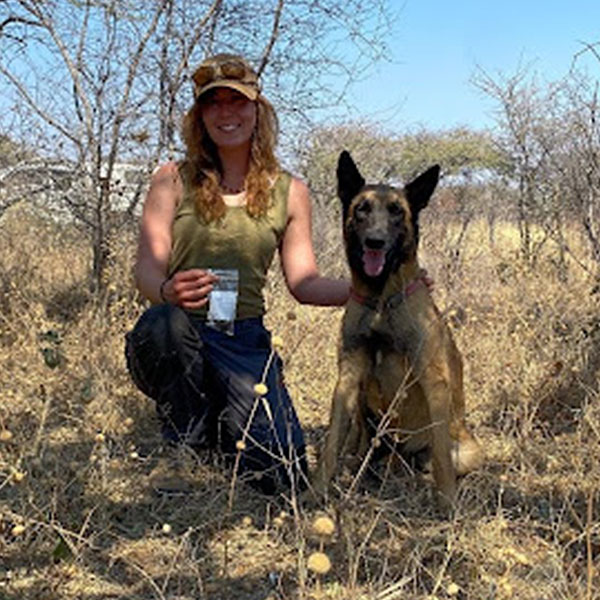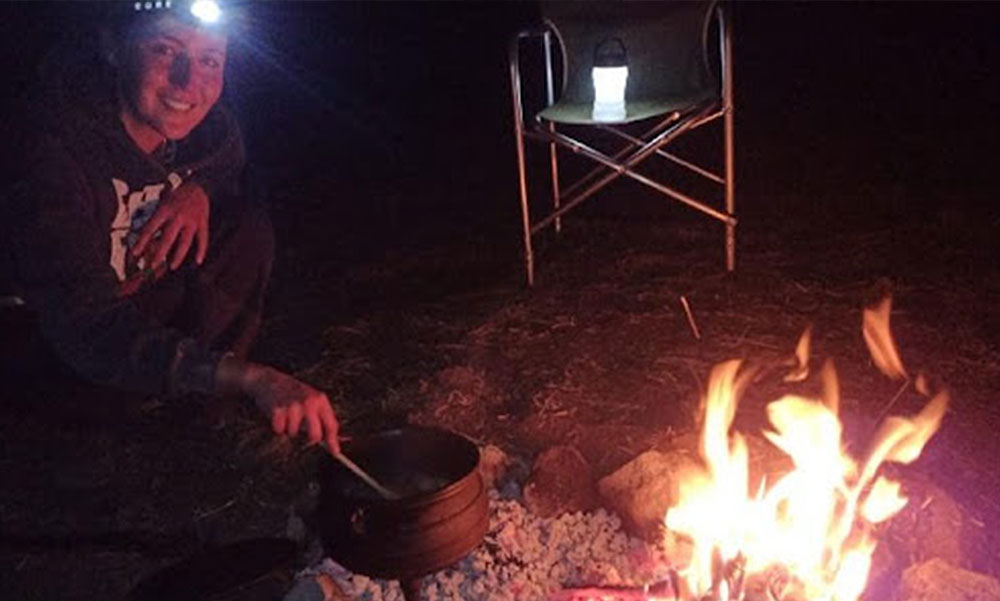Let’s Talk Poop – Ecology Internship at CCF
-

- by Dallas Ruble October 6, 2021

I came to CCF as an ecology intern in April 2021 with the plan to stay 3 months. This soon changed to 6 months after I realized the amazing opportunities available to me. Perhaps one of the most memorable opportunities I experienced while interning here was joining the scat detection team for a week in the field. The scat detection team consists of Tim Hofmann and his trusty scat detection dog Enyakwa (Enya). Tim trained Enya to alert for cheetah scat as a part of his Ph.D. project. I had been at CCF a few months already assisting with game counts, checking camera traps, and analyzing data before being invited out with them. I didn’t know what to expect out there and admittedly was a little nervous.
We camped on farmland for a week running transects and communicating with farmers. A typical day in the field consisted of waking up at 6:00, driving to different farms, conducting morning and afternoon transects, looking for potential play trees, coming back to camp after dark, and cooking dinner on the fire! My responsibilities consisted of recording any scat alerted by Enya and recording abiotic variables such as speed and direction of the wind, temperature, humidity, vegetation density, etc. I also went ahead on the transects to drop samples of previously collected cheetah scat as a reinforcement tool to keep Enya happy and motivated.

The first day out I knew our trip was going to be a memorable time. As we were driving around the backroads of this huge farm we got stuck in huge aardvark holes. They were everywhere! Half of the tire was stuck inside a hole, if we moved forward, backward, or to the side, we would have fallen into other holes equally as large as the first. Fortunately, Tim has a good sense of humor and managed to wiggle us out of that mess. By the second day, Enya found cheetah scat and an active play tree! It wasn’t every day we found cheetah scat but when we did, it was a good day.
Although our focus was to see how consistent Enya was in detecting scat, I would say that the biggest takeaway from this experience is the importance of creating a good rapport with the community. I say this because all our work revolved around the farmers trusting us. As I am sure many aspiring conservationists have heard professionals in this field say, “the hardest part of conservation is dealing with the people”. This couldn’t be further than the truth! Human-wildlife conflict mitigation is perhaps one of the most difficult aspects of conservation. It takes skills and an enormous amount of patience to slowly change a person’s mind about a concept that is ingrained in them. I would recommend anyone hoping to get involved in research and human-wildlife conflict to intern with CCF and experience firsthand what it is like.
Related Reading
-
September 30, 2025
Brendy’s Story: Honoring My Dad with the Cheetah Conservation Fund -
December 3, 2023
Paws, Prints and DNA: Chronicles of a Genetics Intern




